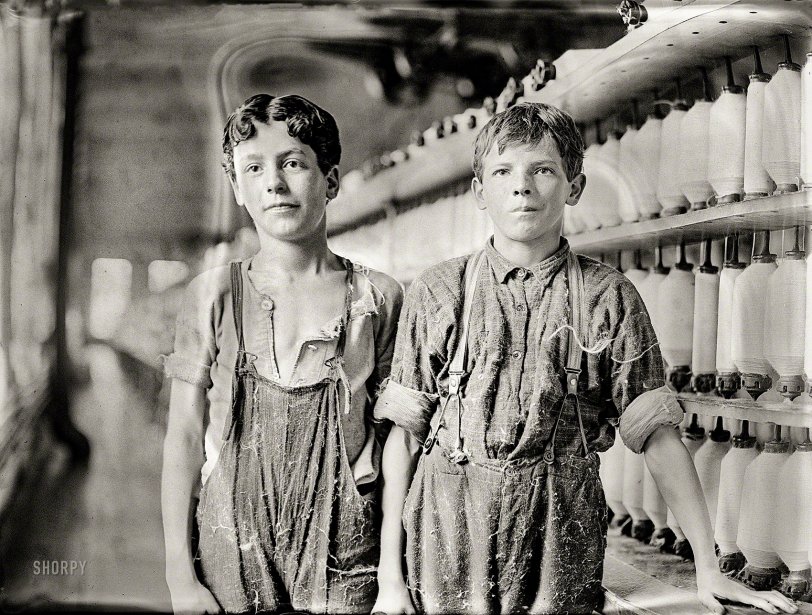


Framed or unframed, desk size to sofa size, printed by us in Arizona and Alabama since 2007. Explore now.
Shorpy is funded by you. Patreon contributors get an ad-free experience.
Learn more.

- Tough Guys
- Lost in Toyland
- And without gloves
- If I were a blindfolded time traveler
- Smoke Consumer Also Cooks
- Oh that stove!
- Possibly still there?
- What?!?
- $100 Reward
- Freeze Frame
- Texas Flyer wanted
- Just a Year Too Soon
- WWII -- Replacing men with women at the railroad crossing.
- Yes, Icing
- You kids drive me nuts!
- NOT An Easy Job
- I wonder
- Just add window boxes
- Icing Platform?
- Indiana Harbor Belt abides
- Freezing haze
- Corrections (for those who care)
- C&NW at Nelson
- Fallen Flags
- A dangerous job made worse
- Water Stop
- Passenger trains have right of way over freights?
- Coal
- Never ceases to amaze me.
- Still chuggin' (in model form)
Print Emporium
Back-Ropers: 1909

May 1909. "Leopold Daigneau and Arsene Lussier, 'back-roping boys' in mule-spinning room at Chace Cotton Mill, Burlington, Vermont." Glass negative by the child-labor reformer Lewis Wickes Hine. View full size.
Mule Spinners
"The spinning mule is a machine used to spin cotton and other fibres. They were used extensively from the late 18th to the early 20th century. Mules were worked in pairs by a minder, with the help of two boys: the little piecer and the big or side piecer. The carriage carried up to 1,320 spindles and could be 150 feet long, and would move forward and back a distance of 5 feet four times a minute. The mule was the most common spinning machine from 1790 until about 1900 and was still used for fine yarns until the early 1980s." (Wikipedia)
























On Shorpy:
Today’s Top 5